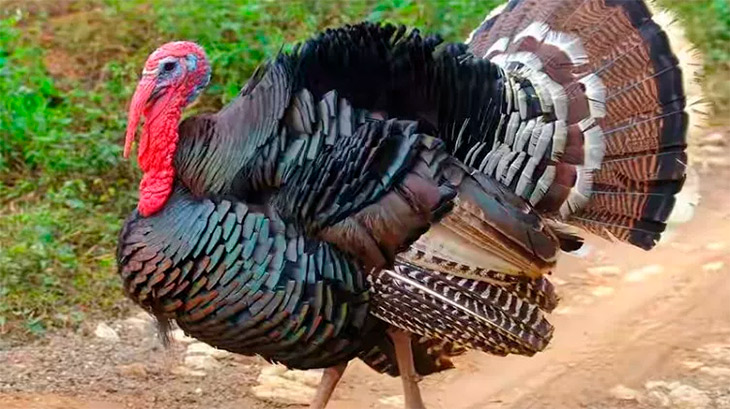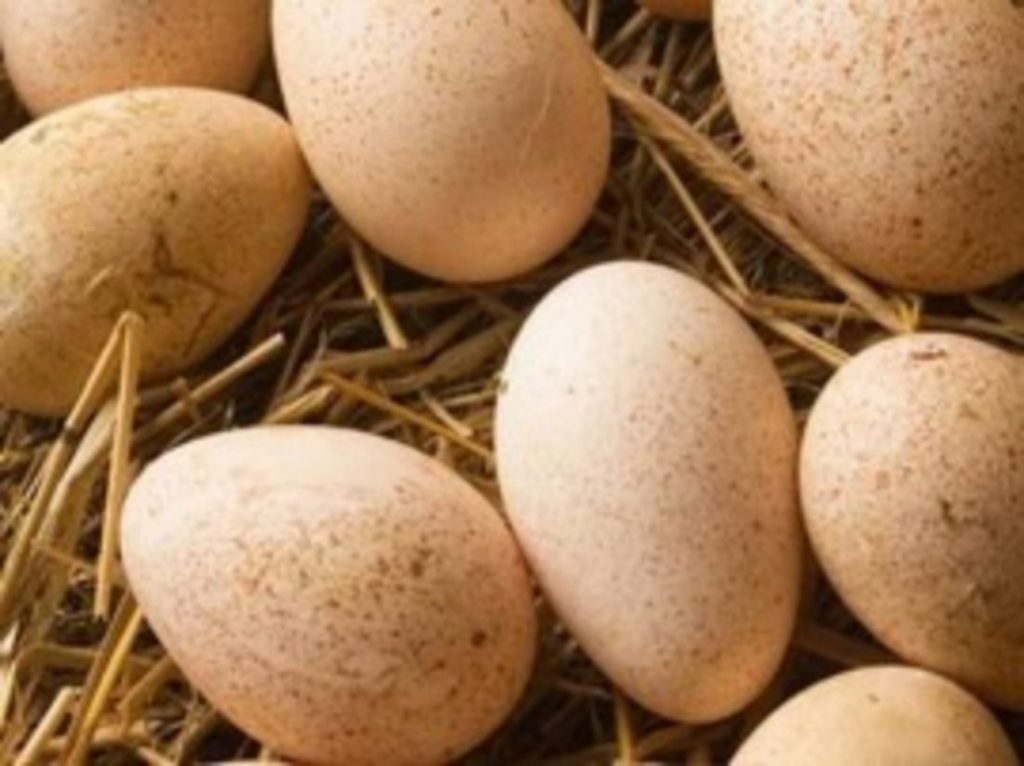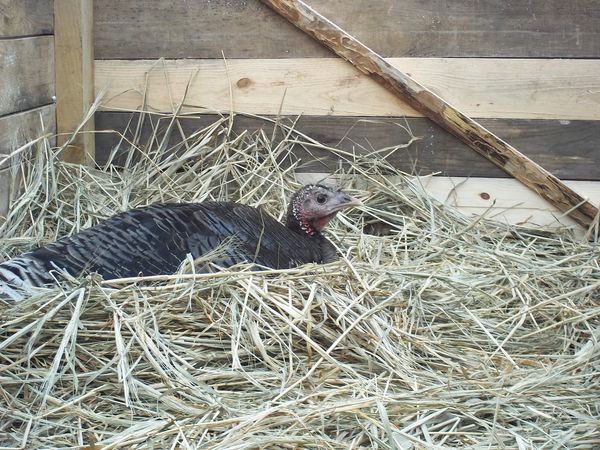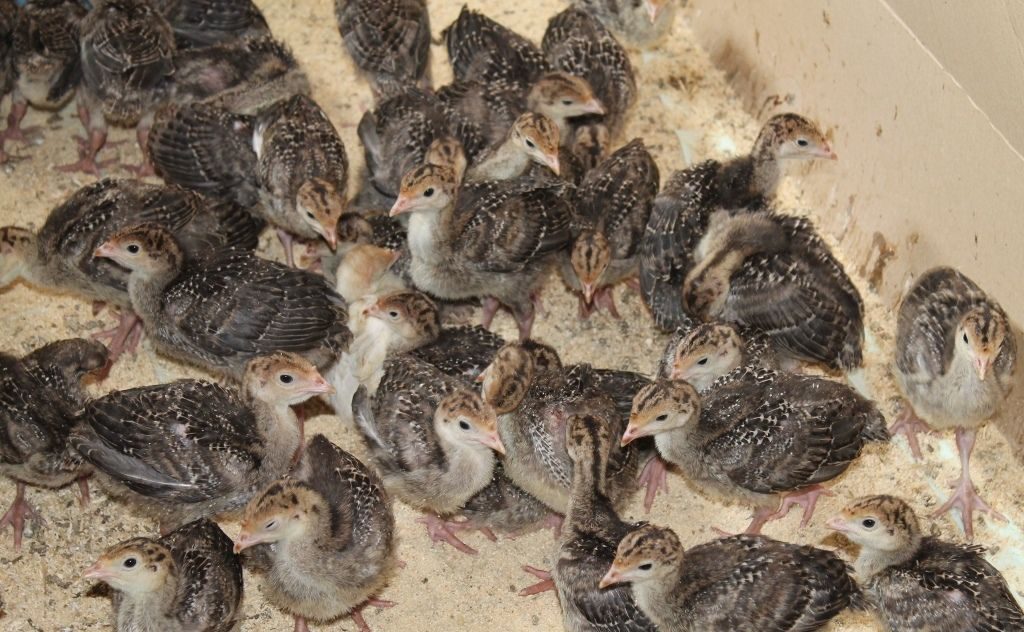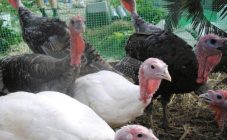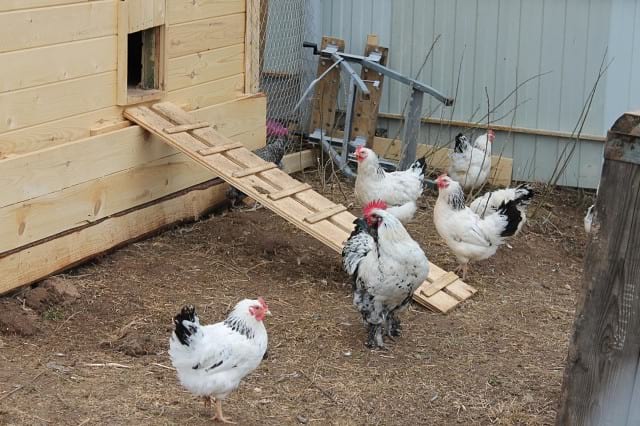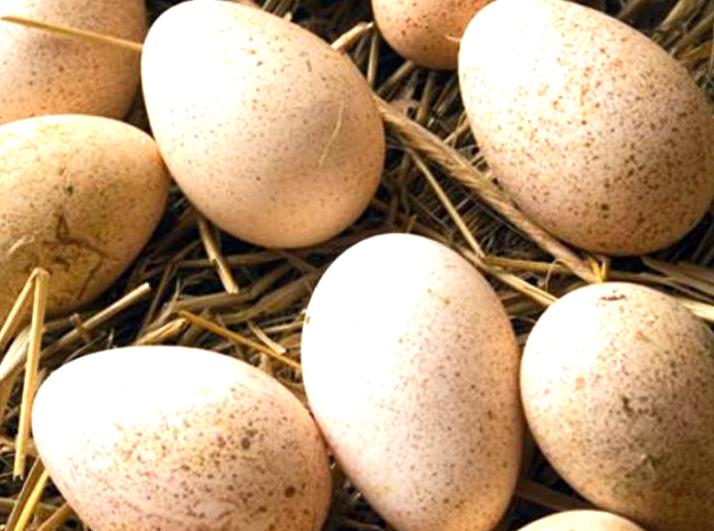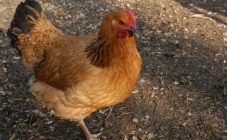Content:
Turkey is becoming more and more popular with farmers. This is due to the fact that this bird at a lower cost is able to produce much more meat than broilers. In addition, turkey meat has a pleasant and unique taste. And meat can even be given to people who suffer from allergies. When choosing a breed, many farmers prefer the Bronze turkey breed.
The origin of the breed
Turkeys were originally domesticated in North America. Later the birds came to Europe and began to breed them, creating new breeds suitable for breeding in the Old World. As a result of the work of breeders, turkeys of the Bronze Broad-breasted breed were bred.
The breed is popular with farmers for its fast growth as well as good meat performance. The maximum live weight of a bird is officially recorded at 35 kg.
In America, Bronze turkeys are used by geneticists to breed crosses with high productivity. For example, the Camerino cross is capable of gaining weight up to 20 kg in a short time. And representatives of the Bronze 708 cross, with other advantages, can boast of a majestic view.
Bronze turkey: description of the breed and its characteristics
Birds of this breed attract attention with the brightness of their color. The plumage is often iridescent. The turkeys' neck and upper breast are black, while the belly and lower breast are brown. The beak of birds is brown, the eyes are small and have a dark brown tint.
Experts recommend taking the bird out in an aviary, and not on a walk. To breed the breed, you need to equip a spacious aviary, where the males should be separate from each other. A female and male family should be kept separate from other families.
It is also important that turkeys grow quite quickly when they consume a small amount of feed. Within 5.5–6 months, individuals are ready for slaughter.
Females do not differ from males in color. In order to distinguish between individuals of different sexes, you need to focus on other indicators:
- the mass of the female is three times less than that of the male;
- on the chest of an adult male, a tassel develops, presented in the form of long feathers;
- males have red growths on their heads and above their beaks.
The growths in males are popularly called corals. They are present even in young poults, but they become more noticeable with age. When the male is nervous or very overexcited, the growths become almost blue.
In addition to describing the Bronze 708 turkey, it is important to know that this breed is considered highly productive. The male is able to gain 16 kg of live weight, and the female is about 9 kg. The productivity of the Bronze 708 turkey breed consists in a high meat yield, which reaches 66%.
If we talk about the egg production of birds, it is worth noting that one Bronze turkey can lay up to 120 eggs throughout the year. Each egg weighs approximately 80–95 g. They have a gray shell and small brown specks.
Features of maintenance and feeding
Birds should feel free and comfortable in the house. At least 1 m2 of area should be allocated for 1 individual. For turkeys, it is necessary to equip perches at a height of at least 60 cm.Each perch should be approximately 40-50 cm wide.
For the construction of nests, it is better to use wooden boxes, the height of the sides of which ranges from 55 to 75 cm. The bottom of the nest is lined with hay or dry grass.
During the winter months bronze turkeys must be heated and ventilated. The air temperature in the house should be between 12-15 degrees. It is advisable to cover the floor of the room with hay. This is necessary so that the birds' feet do not freeze. The pen should be free of drafts and high humidity.
For feeding turkeys of this type, it is recommended to use special compound feeds that contain the necessary amount of vitamins and minerals. In addition, it is recommended to provide poultry with fresh grass and vegetables.
Turkeys who have reached adulthood can also eat waste from the human table, boiled potatoes or porridge, peeling potatoes. It is necessary to feed adult turkeys of this breed at least 3-4 times a day.
In late autumn or winter, the birds are given 2 grain and 1 time a mash. When compiling a diet for turkeys of this breed, it must be borne in mind that the amount of wet and dry food should be the same.
The Bronze turkey that lays eggs should also receive additional cottage cheese and vegetables, and the amount of grain for it should be reduced. This is important to keep the shells on the eggs strong.
Breeding conditions for Bronze turkeys
The turkey has a well-developed maternal instinct, which greatly facilitates the breeding of chicks. Most farmers do not use incubators to breed turkey poults of this breed. Up to 20 eggs can be placed under one female. The turkey can hatch eggs and other poultry. She will be a good mom for them. Females 2–4 years old are best suited for incubating eggs.
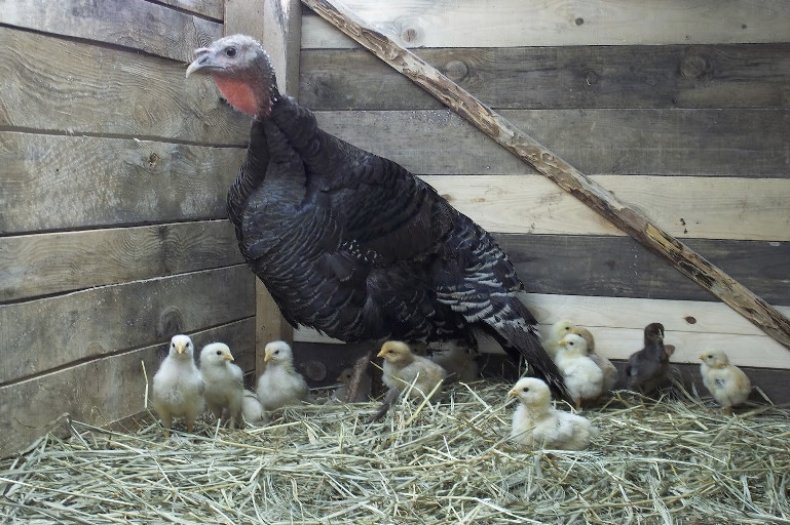
The turkey has a well-developed maternal instinct, which greatly facilitates the breeding of chicks.
If, nevertheless, an incubator is used to breed chicks, then almost immediately after they hatch and dry, they can already be given to the female. The air temperature in the room where the chicks are kept should be within 29-31 degrees.
Small bronze turkey poults need extra lighting. When they reach 14-15 days of age, the lighting can be brought to an 8 hour mode, and the temperature in the room can be gradually reduced to 27 degrees.
Up to 7 days of age, it is recommended to give chicks: chopped boiled eggs with cottage cheese, clover, onions, nettles.
Bronze turkey poults have a pecking reflex problem. To fix it, you can use the following tips:
- feed only on a clean white cloth;
- lightly tap the place with food with a small stick, which will attract chicks to food;
- forcefully place a little egg or greenery in the beak of each chick;
- place several chickens next to the turkey poults (they will watch how the chickens eat and begin to repeat after them).
These simple tricks will help chicks quickly learn to peck at food.
It is better to cover the floor in a cage where turkeys are kept with cardboard in the first days. Then the cardboard can be removed and straw or hay used.
For feeding turkey poults use feeders. They should be flat and have low sides. Fresh food is poured into them with each feeding. In this case, the old one is completely thrown away, and the feeder is thoroughly cleaned.
From 20 days of age, chicks can already begin to walk. The first time walking lasts no more than 3 hours. Gradually, the festivities stretch for the whole day.There should be no drafts in the room where the chicks are. This is an important condition to avoid several diseases.
Caring for Bronze turkey poults is to ensure the necessary conditions of detention, as well as proper and timely nutrition. A turkey is engaged in raising young animals.
The costs of breeding and raising this variety of turkeys quickly pay off. At the same time, birds provide not only tasty dietary meat, but also nutritious eggs. Therefore, owners of private poultry farms, if possible, should consider breeding this breed of turkeys.

